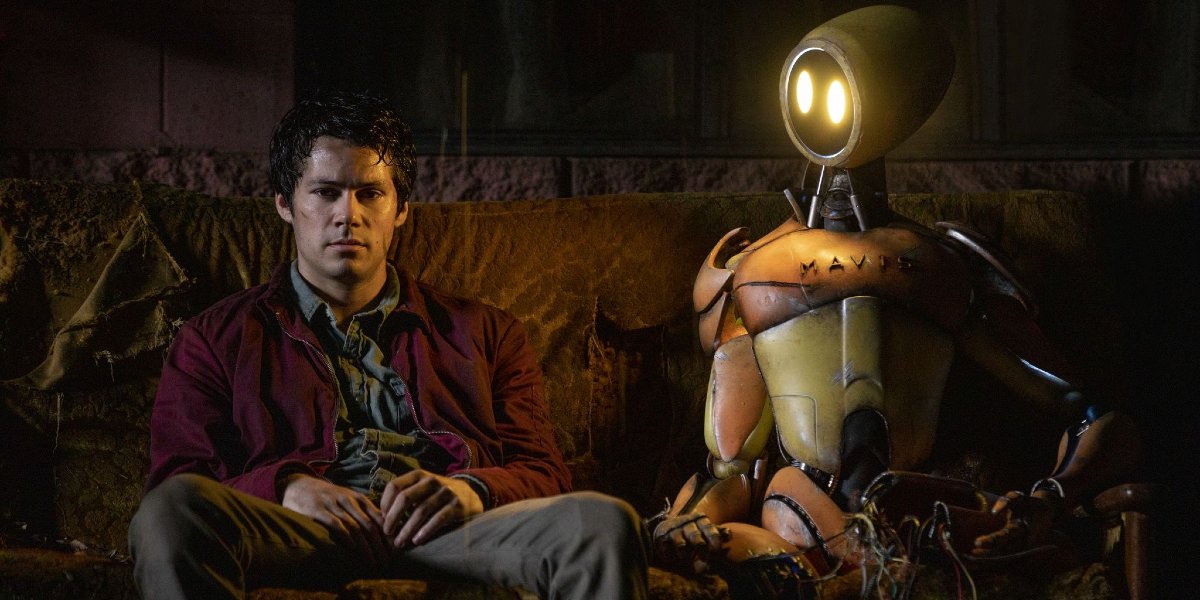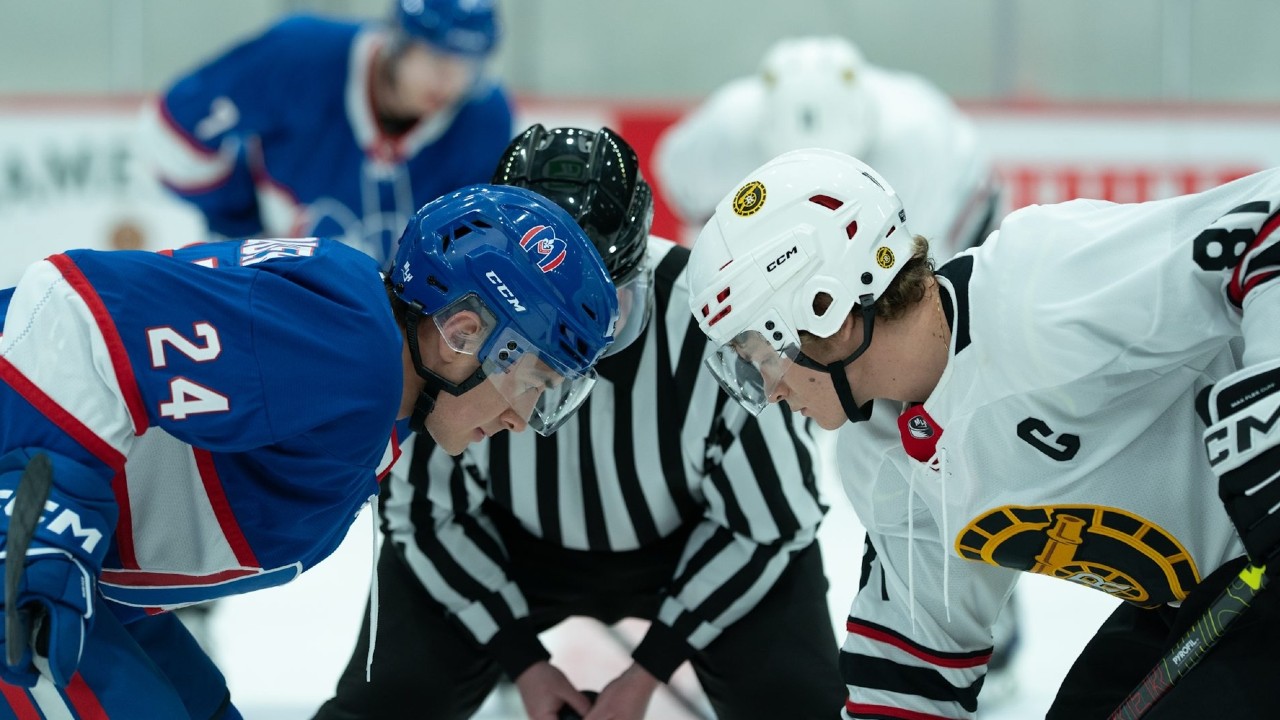The ‘Emotional’ Scene Shawn Levy Says Was ‘Critical’ For Love And Monsters

Warning: SPOILERS for Love and Monsters are currently in play. Should you be worried about those, hold off on reading this story until you’ve seen the film for yourself.
When developing any script, but especially when shaping one as clear in purpose as this weekend’s Love and Monsters, there’s a chance that any scene could be cut at a moment’s notice. The trick is obviously to know which scenes need to stay and which ones need to go. But sometimes there’s that one piece of the puzzle that, above all others, needs to stay intact. With more than a decade of development on this project, producer Shawn Levy encountered one of those moments in the early days of putting Love and Monsters together, and sure enough, what resulted is a scene so full of emotional meaning, it’s nothing short of crucial to the narrative that bookends its existence.
As we see Dylan O’Brien’s character Joel make his way through Love and Monsters’ apocalyptic landscape, a lot of blockbuster adventure awaits on his quest to find his high school girlfriend. An 85-mile trek through the monster ridden world that he exists in isn’t exactly a walk in the park, unless that park happens to be built by irresponsible billionaires with cutting edge genetic technology. But in the middle of director Michael Matthews’ action-comedy quest, there’s a scene where Joel finds himself being kept company by a very futuristic personal electronic assistant.
Known as Mav1s, spelt with a “1” instead of an “I,” as she insists, the robotic character is someone that our hero is familiar with, but has never seen in working order. Amounting to a walking/talking Alexa, Mav1s shares a moment with Joel that confirms his humanity, reminding him of his life before the “monsterpocalypse.” It’s a moment that dials down the momentum in Love and Monsters, but with a very important purpose; one that I got to discuss with Shawn Levy himself on behalf of CinemaBlend. During our conversation, I told Mr. Levy about how much that scene had stuck with me as an audience member, and in turn, he revealed the history of Mav1s’ big on-screen beat:
You know what’s interesting? I remember from early on in development, that sequence always, always, always my favorite scene in the movie. And it was unexpected, it was deeply moving, and it is literally the turning point for the protagonist. In my opinion, it’s the sequence that makes Love and Monsters unique, from all the other movies it might be compared to. The movie effectively stops in the middle, and takes a deep dive into the character’s part and history in a way that I agree is very moving. And no matter how many drafts of the script we’ve been through, protecting the Mav1s sequence was always critical, and non-negotiable.
Over the course of eight years of development, writer Brian Duffield’s Black List script, formerly known as Monster Troubles, was morphed into the film you see before you today, cleverly retitled Love and Monsters. Through that time, there were certain core pillars that remained in play, no matter how various rewrites attempted to change the ultimate story. The first core value was for the film to embody a product that occupied the crossroads of a classic teen comedy meeting a post-apocalyptic adventure.
Second, and more important to Shawn Levy, this particularly emotional scene had to be kept in the film at all costs, as it was critical to the adventure of the film’s hero. Not only that, but in further discussing the movie with Levy, his belief in just how important the Mav1s scene was to Love and Monsters story highlighted a rather interesting beat of humanist energy that ties Dylan O’Brien’s overall performance together perfectly. In Levy's words:
That’s it, that’s the irony. The most emotional scene in the movie is with a robot. The most human scene in the movie is with a non-human, and our protagonist. … It really is its own thing, Love and Monsters. It’s far more humanist and warm hearted than a lot of apocalyptic comedies. It’s focused on its characters more than its monsters, and we never lost our way on that front.
“Humanist” is a word that is important to remember when it comes to works that Shawn Levy has put his personal stamp on, both as a producer and a director. Much like what he’s aiming to accomplish with the forthcoming release of his big Ryan Reynolds collaboration Free Guy, Levy’s energies in reshaping the story of Love and Monsters kept a constant focus on how important the humanity of Dylan O’Brien’s Joel is to his journey. But of course, there’s still a lot of humorous adventure to be had in the film, and that was just as equally important as the emotional throughline, as Shawn Levy explained thusly:
Your Daily Blend of Entertainment News
Here’s the truth: there was always a huge central idea. It was always a coming of age story set against the apocalypse, with the emphasis on the coming of age. So for us, the kind of archetypes were really Ferris Bueller and Risky Business and the great coming of age stories of the ‘80s, where it was about a young person coming into themselves, and transitioning from insecure boy to more confident young man. … As the script has evolved over the years, I would say that the movie has gotten much funnier, much more poignant and touching, and the finishing touches came once 21 Laps started collaborating with Michael Matthews, our director, and everything kind of came together. It was always a big idea, and it was already a solid script; but it took a while to find the voice of the characters, additional humor, and deeper heart.
The importance of Joel and Mav1s’ short-lived friendship in Love and Monsters resonates for pretty much anyone who’s touched the script. I learned this firsthand, not only through speaking with Shawn Levy, but also in chatting with the film’s star, Dylan O’Brien. Also on hand to discuss his leading role, O’Brien’s take on this pivotal scene was in a very similar vein as Levy’s. So much so that when I told him about my reaction to that moment, he opened up quite a bit about his views on its importance:
The script was so good that I’m just happy to hear [that,] I’m just so excited to see people respond to how we executed it, I guess; because I just don’t want to let it down. [With] the Mav1s scene, I had that reaction when I had read the script initially. So for you to point it out and say that it affected you in watching it, that’s so cool, man. That means the world.
A veteran of franchises like MTV’s Teen Wolf and the wildly successful The Maze Runner trilogy, you’d think something like Love and Monsters would feel like a walk in the park for Dylan O’Brien. As you can see in his reaction and care towards the script, it’s something more special than that. Even on a surface level, a scene where a young man like Joel stumbles upon a tool that helps him remember his pre-apocalyptic past feels like one of those tropes that almost always shows up in a disaster film. The hero, clutching a photo or a flashback that fills in vital backstory, breaks down in a dark hour of the soul; just as they’re about to pick up a second wind and fight to the end.
That’s not exactly what happens in Love and Monsters though, as we’ve already been treated to pre-apocalyptic flashbacks before Joel finds a working Mav1s. Rather, the mechanical assistant provides some crucial plot movement, introducing a sort of ticking clock to his journey’s progression. In addition, the fact that this Mav1s unit sacrifices her limited battery power to make this possible tinges the moment with even more bittersweet meaning. In her final moments of operation, Mav1s lets Joel make peace with his past so that he can have a future. And since he’s a character we can root for, it turns a standard scene into a highlight of this absolutely entertaining film. Dylan O’Brien fleshed this point out even more, by making the following remarks:
I think what makes Joel such a cool hero to follow is he’s so human. He’s the epitome of human, especially in the beginning of the journey we see him go on. The courage that he shows, he’s so scared. He’s nothing but scared, and he’s so incapable, but I think just has this thing in him, this very boyish longing in him to live and to love. And there’s something so beautiful in that. … And the humor too, like of the world, and just the tone of the movie and the entire story is so light. With that kind of stopping point, with the Mav1s scene, you’re reminded that this kid has lost everything he has. He went through a really really terrible trauma, and that’s like sort of this reminder that everyone in the world did go through this thing. This kid has nobody. What an incredible reminder for why he’s doing this, and why he has such a will to really just risk his life to even have a chance at having someone in his life that means something to him again, from before it all happened.
2020 has been a year that’s taken a lot from the world, as our collective sense of security already has it feeling like an apocalyptic event is upon us. Love and Monsters not only distracts the audience from this fact, but allows them to connect with it in a way that all good fiction attempts, but doesn’t always land. As Shawn Levy and Dylan O’Brien understood this from the word go, thanks to this benchmark scene in the film’s script, it only served the rest of the film in the best way possible; and you can see it for yourself this very moment, as Love and Monsters is currently in limited theatrical release, as well as available on VOD.

Mike Reyes is the Senior Movie Contributor at CinemaBlend, though that title’s more of a guideline really. Passionate about entertainment since grade school, the movies have always held a special place in his life, which explains his current occupation. Mike graduated from Drew University with a Bachelor’s Degree in Political Science, but swore off of running for public office a long time ago. Mike's expertise ranges from James Bond to everything Alita, making for a brilliantly eclectic resume. He fights for the user.
